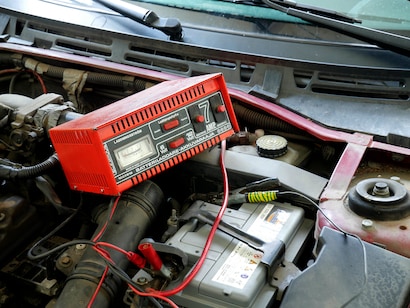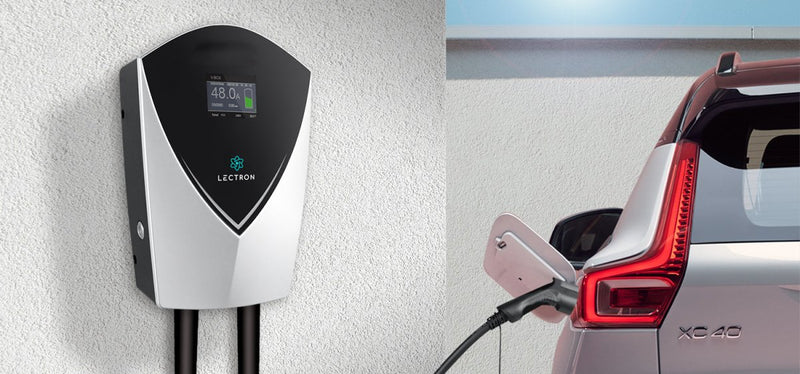Do you know how many amps to charge car battery? A typical car battery charges at around 10 amps. Charging at 2-10 amps is safe and efficient.
Charging a car battery correctly ensures longevity and reliability. A standard car battery usually requires a charge rate of 10 amps for optimal performance. This rate balances safety and efficiency, avoiding overcharging or undercharging. It’s essential to use a suitable charger and follow the manufacturer’s recommendations.
Charging at lower amps, such as 2 amps, can be safer and extend battery life but will take longer. On the other hand, higher amps can charge the battery faster but risk overheating. Regular monitoring during charging is crucial to maintain the battery’s health. Proper charging habits ensure your car is always ready to go.
How Many Amps to Charge Car Battery
Understanding the basics of car battery charging is essential for maintaining your vehicle. Charging a car battery correctly ensures its longevity and performance. Let’s dive into the details.
Battery Types
There are several types of car batteries. Here are the common ones:
- Lead-Acid Batteries: These are the most common. They are affordable and reliable.
- AGM Batteries: Absorbent Glass Mat batteries. They are more efficient and last longer.
- Lithium-Ion Batteries: These are lightweight and have a long lifespan. They are mostly used in electric vehicles.
Charging Methods
Different methods exist for charging car batteries. Each method has its own advantages.
| Method | Description | Pros | Cons |
|---|---|---|---|
| Trickle Charging | Slow and steady charging | Prevents overcharging | Takes a long time |
| Fast Charging | Charges battery quickly | Saves time | Can overheat battery |
| Smart Charging | Automatically adjusts charging rate | Safe and efficient | More expensive |
It’s important to choose the right charging method. This ensures your battery charges properly without damage.
Understanding Amps
Charging a car battery involves understanding amps. Amps measure the flow of electricity. Choosing the right amp level is crucial. Charging with the correct amps ensures the battery’s longevity and efficiency. Let’s dive deeper.
What Are Amps?
Amps, short for amperes, measure electrical current. They show how much electricity flows from one point to another. Higher amps mean a stronger current. Lower amps mean a weaker current. Think of it like water flow in a hose. More amps equal a stronger water flow.
Role Of Amps In Charging
Amps play a crucial role in charging car batteries. Using too many amps can overcharge the battery. This can damage it. Using too few amps can take too long to charge. The right amp level is essential.
- High amps: Quick charge but risk of overcharging.
- Low amps: Safer but slower charging.
Choosing the right amp setting depends on your battery type. Always follow the manufacturer’s guidelines.
| Battery Type | Recommended Amps |
|---|---|
| Lead-acid | 10-20 amps |
| AGM | 5-10 amps |
| Lithium-ion | 10-30 amps |
Using the right amps ensures a healthy, long-lasting battery. Always check your battery’s requirements before charging.
Choosing The Right Amperage
Choosing the right amperage to charge a car battery is crucial. It ensures the battery charges efficiently and safely. Using the wrong amperage can damage the battery or lead to insufficient charging. Understanding the factors to consider and the recommended amperage helps maintain battery health.
Factors To Consider
Several factors influence the correct amperage for charging a car battery:
- Battery Capacity: Measured in amp-hours (Ah). Larger batteries need higher amperage.
- Battery Type: Lead-acid, AGM, or lithium-ion. Each type has unique charging needs.
- Charger Type: Smart chargers adjust amperage automatically. Manual chargers need careful monitoring.
- Battery Condition: A deeply discharged battery may need a lower initial amperage.
- Time Available: Higher amperage charges faster but may reduce battery lifespan.
Recommended Amperage
The recommended amperage varies based on the battery type and capacity:
| Battery Type | Capacity (Ah) | Recommended Amperage |
|---|---|---|
| Lead-Acid | 40-60 Ah | 10 Amps |
| AGM | 40-60 Ah | 5-10 Amps |
| Lithium-Ion | 40-60 Ah | 10-20 Amps |
Lead-acid batteries typically charge at around 10 amps. AGM batteries should use 5-10 amps to prevent damage. Lithium-ion batteries can handle 10-20 amps for faster charging.
Always refer to the battery manufacturer’s guidelines. They provide specific amperage recommendations for their products. Using the correct amperage helps extend battery life and ensures optimal performance.

Credit: www.carcitywholesale.com
Charging Time And Efficiency
Understanding the charging time and efficiency of a car battery is crucial. It ensures optimal performance and longevity. The amperage you choose significantly impacts both these factors.
Impact Of Amperage On Charging Time
The amperage directly affects how fast your car battery charges. Higher amps result in faster charging times. For instance:
| Amperage (Amps) | Approximate Charging Time |
|---|---|
| 2 Amps | 24-48 hours |
| 10 Amps | 3-6 hours |
| 20 Amps | 1-2 hours |
Charging at lower amps is safer for the battery. It reduces the risk of overheating and extends battery life.
Optimal Charging Efficiency
For optimal charging efficiency, consider your battery’s capacity. Use the correct amperage to avoid overcharging or undercharging. Follow these tips:
- Check the manufacturer’s guidelines for recommended amperage.
- Use a smart charger to prevent overcharging.
- Monitor the battery during charging for safety.
A balanced approach ensures efficient charging and maintains battery health. This leads to a longer lifespan for your car battery.
Safety Considerations
Charging a car battery can be tricky. Safety is crucial to avoid accidents. Here are some key points to consider for safe charging.
Preventing Overcharging
Overcharging can damage your car battery. Use a smart charger to prevent this. Smart chargers stop charging when the battery is full.
- Check the charger’s instructions before use.
- Monitor the charging process closely.
- Disconnect the charger once charging is complete.
Handling High Amperage
High amperage can be dangerous. Always use the correct amperage setting. Higher amps charge faster but can overheat the battery.
| Amps | Charging Speed | Safety Tips |
|---|---|---|
| 2-4 Amps | Slow | Safe for long-term charging. |
| 10 Amps | Moderate | Use for a faster charge with caution. |
| 20 Amps | Fast | Monitor the battery closely. |
Always wear safety gear. Gloves and goggles protect from acid spills and sparks.
- Read the manual before starting.
- Keep the charger and battery in a well-ventilated area.
- Never leave a charging battery unattended.
Following these safety tips can save you from accidents. Always prioritize safety while charging your car battery.

Credit: ev-lectron.com
Tools And Equipment
Charging a car battery efficiently requires the right tools and equipment. Using the correct tools ensures safety and optimal charging. Let’s explore the essential tools and equipment you need.
Types Of Chargers
Car chargers come in various types. Each type has its own benefits:
- Manual Chargers: These require monitoring. They are simple but need attention.
- Automatic Chargers: These stop charging when the battery is full. They are user-friendly and safe.
- Smart Chargers: These adjust the charge rate. They protect the battery from overcharging.
Choosing the right charger depends on your needs and budget.
Using A Multimeter
A multimeter is an essential tool for checking your battery’s status. Here’s how to use it:
- Set the multimeter to DC voltage.
- Connect the positive lead to the battery’s positive terminal.
- Connect the negative lead to the battery’s negative terminal.
- Read the voltage. A fully charged battery should read around 12.6 volts.
Using a multimeter helps you know when your battery needs charging. It ensures you don’t overcharge or undercharge your battery.
Below is a table summarizing the tools and their uses:
| Tool | Use |
|---|---|
| Manual Charger | Requires monitoring, simple to use |
| Automatic Charger | Stops charging automatically, safe |
| Smart Charger | Adjusts charge rate, prevents overcharging |
| Multimeter | Checks battery voltage |
Using the right tools and equipment ensures your battery is charged correctly. This extends your battery life and keeps your car running smoothly.
Maintaining Battery Health
Ensuring your car battery’s health is crucial for its longevity. Proper maintenance can prevent breakdowns and costly replacements. Understanding how many amps to charge a car battery is vital.
Regular Maintenance Tips
- Check battery terminals: Ensure they are clean and free from corrosion.
- Inspect battery cables: Look for any signs of wear or damage.
- Monitor fluid levels: Keep the electrolyte levels within the recommended range.
- Test battery voltage: Use a voltmeter to ensure the battery is holding a charge.
- Charge regularly: Use the right amperage to charge the battery efficiently.
Signs Of A Failing Battery
- Slow engine crank: The engine takes longer to start.
- Dim lights: Headlights and interior lights are not as bright.
- Warning light: The battery warning light is on.
- Swollen battery case: The battery case looks bloated.
- Old age: The battery is more than three years old.
| Charging Amps | Time to Full Charge |
|---|---|
| 2 Amps | 24-48 hours |
| 10 Amps | 4-6 hours |
| 20 Amps | 2-3 hours |
Using the right amperage ensures your battery charges safely and effectively.

Credit: www.jdpower.com
Conclusion
Above, we discuss how many amps to charge car battery. Charging a car battery requires knowing the correct amperage. Always follow the manufacturer’s guidelines for safe charging. Using the right charger ensures battery longevity and performance. Regular maintenance prevents unexpected breakdowns. Understanding these basics helps keep your vehicle running smoothly.
Stay informed and your car battery will thank you.

